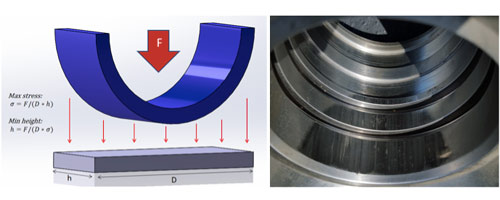
It is important where you put a seal—every part of a cylinder has seals, and they are there for specific reasons. Rod wipers are the ones that are most exposed to the elements in any hydraulic cylinder application. Rod wipers have a groove that pushes it against the rod itself. Any time the cylinder retracts, anything on the rod wants to be scraped off of it. Rod wiper seals tend to take off dust and other loose debris. You can upgrade those to a metal scraper; some applications might have melted junk or other garbage that you don’t want to get on the cylinder rod, and metal scrapers will remove that.
Buffer seals acts as a buffer between the fluid that’s in the cylinder itself and the outside world, and protects the U-cup from pressure spikes. One of the disadvantages of rod u-seals is they have to be pliable enough to be made out of a softer type rubber and they can cause extrusions and damage from high pressure spikes. They can cause early failure. Designers put a loaded O-ring in front of it, which acts as a buffer—the U-cup only has to have some dynamic sealing, so it’s good for a constant seal but slides back and forth. Any of those pressure spikes are absorbed by the buffer seal.
After that, there is the guide ring or the wear ring. This acts like a bearing on the rod. Not all cylinders have this type of configuration. Some might have a bronze bearing that is also the gland. It might not have a wear ring at all, it could have the gland itself be the bearing.
Then there is the end seal. This is the seal that would seal the gland from the rod side of the barrel. This is just a static seal. This may be a heavy duty one that has an O-ring and a back-up so it can handle very high pressure between the differential which is atmospheric pressure and the high pressure that would be in the cylinder.
You will also find static seals in the piston, as well as loaded P-seals. Wear strips are two guide rings that help support the load of whatever’s on the rod or the differences in load between the cap and the rod side. These also absorb the wear of the cylinders. It is easier to replace two wear strips than it is to replace a whole piston or replace a barrel.
The post What kinds of seals are there in a hydraulic cylinder? appeared first on Sealing & Contamination Control Tips.
Filed Under: Cylinders & Actuators, Sealing, Sealing & Contamination Control Tips